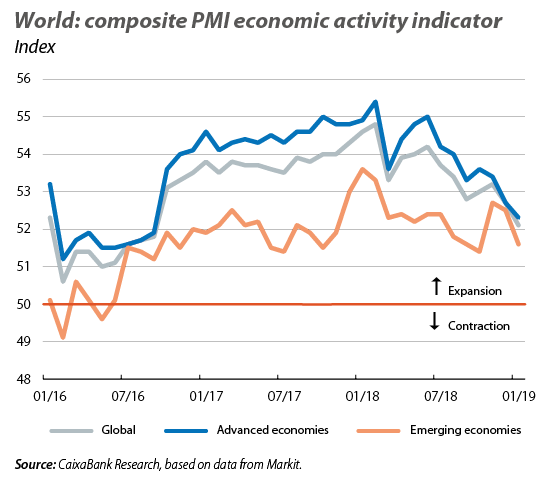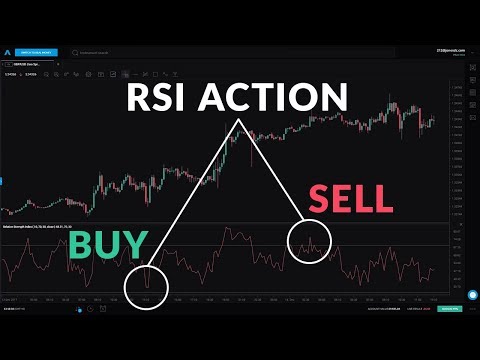
Adam received his master’s in economics from The New School for Social Research and his Ph.D. from the University of Wisconsin-Madison in sociology. He is a CFA charterholder as well as holding FINRA Series 7, 55 & 63 licenses. He currently researches and teaches economic sociology and the social studies of finance at the Hebrew University in Jerusalem. Credit analytics expert helping clients understand, develop, and implement credit models for origination, monitoring, and regulatory reporting. Additional methods for N and more details on the parameters are available in the source paper.
Capital requirements are standardized regulations in place for banks and other depository institutions that determine how much liquid capital (that is, easily sold securities) must be held viv-a-vis a certain level of their assets. The cost of capital measures the cost that a business incurs to finance its operations. It measures capital charge meaning the cost of borrowing money from creditors, or raising it from investors through equity financing, compared to the expected returns on an investment. This metric is important in determining if capital is being deployed effectively. In business, cost of capital is generally determined by the accounting department.
- The company can also sell bonds, which create loans from investors to the company, and this type of capital is debt capital.
- (b) Credit risk capital charge for residential mortgage assets and collateralized mortgage obligations.
- The methodology for SFA and SSFA regulatory capital calculations are based on the most recent rules as listed in the Federal Register, Vol.
- He currently researches and teaches economic sociology and the social studies of finance at the Hebrew University in Jerusalem.
- As highlighted in this article, the SFA framework could result in significant regulatory capital relief when compared to the SSFA framework.
(4) The credit risk capital charge for any derivative contracts entered into between a Bank and its members shall be calculated in accordance with paragraph (e)(1) of this section, except that the Bank shall use the credit risk percentage requirements from Table 1 to this section, which sets forth the credit risk percentage requirements for advances. As banks operate in challenging regulatory and business environments, it is essential that they make sound regulatory choices in their risk management plans. In the structured finance domain, most banks choose the Supervisory Formula Approach (SFA) and the Simplified Supervisory Formula Approach (SSFA) for the regulatory capital charges, and compare the expected cost with the benefits of moving to SFA in the search for regulatory capital relief. The methodology for SFA and SSFA regulatory capital calculations are based on the most recent rules as listed in the Federal Register, Vol. Please refer to Appendix 1 and 2 for the detailed mechanics and formula of both approaches.
The Electronic Code of Federal Regulations
An investor might look at the volatility (beta) of a company’s financial results to determine whether a stock’s cost is justified by its potential return. The concept of the cost of capital is key information used to determine a project’s hurdle rate. A company embarking on a major project must know how much money the project will have to generate in order to offset the cost of undertaking it and then continue to generate profits for the company. The term cost of capital is used by analysts and investors, but it is always an evaluation of whether a projected decision can be justified by its cost. Investors may also use the term to refer to an evaluation of an investment’s potential return in relation to its cost and its risks.
Before the 1980s, there were no general capital adequacy requirements on banks. The capital was only one of many factors used in the evaluation of banks, and minimums were tailored to specific institutions. The cost of debt can also be estimated by adding a credit spread to the risk-free rate and multiplying the result by (1 – T). A well-recognized researcher in the field; offers many years of experience in the real estate finance industry, and leads research efforts in expanding credit risk analytics to commercial real estate. Also known as regulatory capital, these standards are set by regulatory agencies, such as the Bank for International Settlements (BIS), the Federal Deposit Insurance Corporation (FDIC), or the Federal Reserve Board (the Fed).
Weighted Average Cost of Capital (WACC)
The credit risk capital charge for residential mortgages, residential mortgage pools, residential mortgage securities, and collateralized mortgage obligations shall be determined as set forth in paragraph (g) of this section. (c) Credit risk capital charge for advances, non-mortgage assets, and non-rated assets. Except as provided in paragraph (j) of this section, each Bank’s credit risk capital charge for advances, non-mortgage assets, and non-rated assets shall be equal to the amortized cost of the asset multiplied by the credit risk percentage requirement assigned to that asset pursuant to paragraph (f)(1) or (2) of this section. (iii) A Bank shall provide to FHFA upon request the methodology, model, and any analyses used to estimate the potential future stress losses on its residential mortgages, residential mortgage pools, residential mortgage securities, and collateralized mortgage obligations, and to determine a stress loss percentage for each such asset. FHFA may direct a Bank to promptly revise its methodology or model to address any deficiencies identified by FHFA.
Relativity Acquisition Corp. Announces Funding and Extension of Deadline to Complete Business Combination – Yahoo Finance
Relativity Acquisition Corp. Announces Funding and Extension of Deadline to Complete Business Combination.
Posted: Mon, 07 Aug 2023 20:54:00 GMT [source]
(ii) The credit risk capital charge for the credit derivative contract calculated pursuant to paragraph (e) of this section is still applied. SFA should result in Capital Relief for improved quality pools as the framework is more sensitive to underlying loan characteristics and considers the LGD, EL, and granularity of the assets. The waterfall structure in both frameworks – SFA and SSFA – is normalized for attachment and detachment parameters; thereby, not affecting risk sensitivity for this analysis. It is commonly assumed that the trade-off for the added complexity of calculating the SFA is regulatory Capital Relief.
Effect of Credit Deterioration on Regulatory Capital Risk Weights for Structured Finance Securities
Furthermore, both approaches require normalization of the waterfall to attachment and detachment points. This website is using a security service to protect itself from online attacks. There are several actions that could trigger this block including submitting a certain word or phrase, a SQL command or malformed data. To illustrate the mechanics of the calculation, refer to the calculation and example in Appendix 3. (B) If the mark-to-market value of the contract is zero or negative, zero.
- The Capital Relief is spread across all product types within the 6-10% Capital Relief range.
- He is a CFA charterholder as well as holding FINRA Series 7, 55 & 63 licenses.
- Adam Hayes, Ph.D., CFA, is a financial writer with 15+ years Wall Street experience as a derivatives trader.
Also, an illustrative example of a single bond’s regulatory capital charge using both approaches is illustrated in Appendix 3. The credit risk capital charge for a non-mortgage asset that is hedged with a credit derivative that has a remaining maturity of one year or more may be reduced only in accordance with paragraph (j)(3) or (4) of this section and only if the credit derivative provides substantial protection against credit losses. (ii) Each Bank shall develop a methodology to be used to assign an internal credit risk rating to each counterparty, asset, item, and contract that is subject to Table 2 to this section.
Capital Requirements: Definition and Examples
While banks are in the process of analyzing which approach to use, this study shows that there are many pool and bond-level characteristics that can aid with the process. While the exact amount of Capital Relief is dependent on the portfolio mix, this analysis allows banks to obtain an estimate of the extent of the Capital Relief based on known pool characteristics. They tend to increase following a financial crisis or economic recession. Capital requirements aim not only to keep banks solvent but, by extension, to keep the entire financial system on a safe footing. In an era of national and international finance, no bank is an island, as regulatory advocates note—a shock to one can affect many. So, all the more reason for stringent standards that can be applied consistently and used to compare the different soundness of institutions.
The other 4% within the tranches exhibited an average SSFA capital charge at the floor of 1.6%, with no Capital Relief relative to the SFA method. A Bank shall provide to FHFA upon request the methodology, model, and any analyses used by the Bank to assign any non-mortgage asset, off-balance sheet item, or derivative contract to an FHFA Credit Rating category. The global financial crisis of 2008 provided the impetus for the passing of the Dodd-Frank Wall Street Reform and Consumer Protection Act of 2010. Created to ensure that the largest U.S. banks maintain enough capital to withstand systematic shocks to the banking system, Dodd-Frank—specifically, a section known as the Collins Amendment—set the tier 1 risk-based capital ratio of 4% mentioned above. Globally, the Basel Committee on Banking Supervision released Basel III, regulations which further tighter capital requirements on financial institutions worldwide.

However, standard residential mortgages were given a weight of 0.5, mortgage-backed securities (MBS) issued by Fannie Mae or Freddie Mac were given a weight of 0.2, and short-term government securities were given a weight of 0. By managing assets accordingly, major banks could maintain lower capital ratios than before. The percentage by which the invested capital is multiplied is called the weighted average cost of capital, or WACC. Each type of capital has a different cost because investors treat each class of investments differently.
Among the industries with lower capital costs are money center banks, power companies, real estate investment trusts (REITs), and utilities (both general and water). Such companies may require less equipment or may benefit from very steady cash flows. Cost of capital may also differ based on the type of project or initiative; a highly innovative but risky initiative should carry a higher cost of capital than a project to update essential equipment or software with proven performance. For example, consider an enterprise with a capital structure consisting of 70% equity and 30% debt; its cost of equity is 10% and the after-tax cost of debt is 7%. As displayed in Figure 1, the Capital Relief diminishes for pools with a higher EWALGD, highlighting the risk sensitivity of SFA, especially for better quality collateral. The lowest EWALGD has the greatest variance, and indicates that good quality pools can have high levels of Capital Relief when using the SFA approach.

The analysis only referenced this rating range due to the relatively small number of RMBS securities within the portfolio that are rated investment grade. The higher delinquency-pipeline in the lower rated securities that result in high SSFA-based capital charges do not always translate to higher calculated expected losses. (B) Second, and only if the total discounted value of the collateral held exceeds the current credit exposure of the contract, any remaining amounts may be applied to reduce the amount of the potential future credit exposure of the derivative contract subject to the capital charge. When Mexico declared in 1982 that it would be unable to service interest payments on its national debt, it sparked a global initiative that led to legislation such as the International Lending Supervision Act of 1983.
Examples of Capital Charge Rate in a sentence
The weighted average cost of capital represents the average cost of the company’s capital, weighted according to the type of capital and its share on the company balance sheet. This is determined by multiplying the cost of each type of capital by the percentage of that type of capital on the company’s balance sheet and adding the products together. This article aims to illustrate the general impact of credit deterioration on regulatory capital risk weights in a large dataset of multiple structured finance asset classes. For investors and risk managers, any asset class-specific trends can help in the investment evaluation process. Many companies use a combination of debt and equity to finance business expansion. For such companies, the overall cost of capital is derived from the weighted average cost of all capital sources.
ALM banking after the crisis: stress-testing for more robust liquidity … – Risk.net
ALM banking after the crisis: stress-testing for more robust liquidity ….
Posted: Tue, 08 Aug 2023 08:51:31 GMT [source]
A firm’s cost of capital is typically calculated using the weighted average cost of capital formula that considers the cost of both debt and equity capital. The capital charge depends on the return that investors expect on each class of capital. Before calculating the capital charge, an analyst must determine both of these numbers. Businesses and financial analysts use the cost of capital to determine if funds are being invested effectively. If the return on an investment is greater than the cost of capital, that investment will end up being a net benefit to the company’s balance sheets.
The firm’s overall cost of capital is based on the weighted average of these costs. The capital charge is significant because it is used to calculate another financial concept called economic profit. This is the net operating profit after taxes, or NOPAT, minus the capital charge. It shows whether the project in question has high enough returns to make it worthwhile to investors. For example, if an investor buys a share of stock from a company in an initial public offering, he contributes the purchase price of that stock to the company’s capital.
